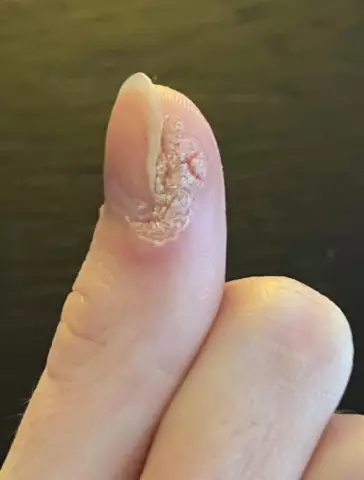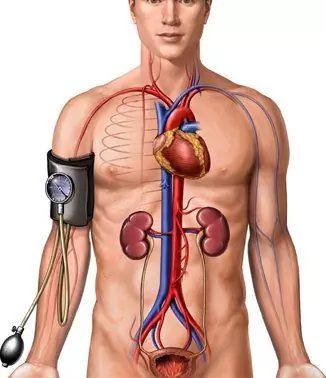- Author Rachel Wainwright [email protected].
- Public 2023-12-15 07:39.
- Last modified 2025-11-02 20:14.
Opisthorchiasis
Brief description of the disease

Opisthorchiasis is an infection with parasitic worms of opisthorchis, in which the ducts of the pancreas, the liver and the gallbladder are affected.
Often, opisthorchiasis provokes the development of cancer of the pancreas and liver.
Reasons for the appearance
The causative agents of opisthorchiasis are fluke Siberian fluke and cat fluke. The intermediate hosts of the parasite are the gill mollusk, which is found in reservoirs with fresh water, fish of the carp family: carp, chebak, dace, rudd, vobla, ide, European roach, tench, bream, carp.
A person becomes infected with opisthorchiasis by eating raw, poorly thermally processed, lightly salted fish, in which there are fluke larvae. Once in the intestines, the larvae emerge from the membranes, penetrate the liver, pancreas, gallbladder and multiply there.
Symptoms of opisthorchiasis
Symptoms of opisthorchiasis differ depending on the duration, intensity of infection of the body with worms. Opisthorchiasis can be acute and chronic.
Acute opisthorchiasis can last for several days or weeks, accompanied by urticaria, fever, aching joints, muscles, pain in the right hypochondrium, under the spoon, an increase in the gallbladder and liver can be observed. Such symptoms of opisthorchiasis in the acute stage are also known: vomiting, flatulence, heartburn, nausea, loose and frequent stools, impaired appetite. When examining the gastrointestinal tract, a stomach ulcer, duodenal ulcer, erosive gastroduodenitis can be detected. In rare cases, acute opisthorchiasis is accompanied by lung damage.
Chronic opisthorchiasis can last 15-25 years or more. Opisthorchiasis manifests itself with symptoms of hepatitis, pancreatitis, cholecystitis, gastroduodenitis: there are pains in the right hypochondrium, similar to biliary colic and passing to the right half of the sternum, pain on palpation of the gallbladder.
Often, opisthorchiasis affects the nervous system, which can cause irritability, headaches, increased fatigue, dizziness, and insomnia. Sweating, tremors of fingers, tongue and eyelids are also symptoms of opisthorchiasis arising from a disturbance in the activity of the nervous system.
Chronic opisthorchiasis can be accompanied by allergic reactions: Quincke's edema, urticaria, itchy skin, arthralgia.
Acute opisthorchiasis in children is rarely diagnosed, and the chronic stage at the age of 1-3 years is manifested as a lag in physical development, impaired appetite, biliary dyskinesia, moderate eosinophilia. Opisthorchiasis in older children is accompanied by a rise in temperature, abdominal pain, skin rash, upset stools, redness of the upper respiratory tract, chronic fatigue.
Diagnosis of the disease
It is difficult to diagnose the disease at an early stage of its development, because the eggs of worms in feces and bile can be detected by passing an analysis for opisthorchiasis only 4-6 weeks after infection. Therefore, it is of great importance to examine the patient, identify the characteristic symptoms of opisthorchiasis, and clarify the data on the use of fish of the carp family for the last month and a half. Additionally, an analysis is carried out for opisthorchiasis, examining the patient's blood.
Finally, opisthorchiasis is confirmed after one or one and a half months if parasite eggs are found in feces or bile.
To determine opisthorchiasis in the chronic stage, a parasitological method is used, based on the study of the duodenal contents of the biliary tract or feces for the presence of opisthorchis eggs in them.
To study the duodenal contents, probing of the biliary tract is carried out, on the eve of which, in order to provoke the active laying of eggs by parasites, it is necessary to take 1-2 g of Chloxil. A sample of bile taken during probing for analysis for opisthorchiasis is examined under a microscope.
Treatment of opisthorchiasis
Treatment of opisthorchiasis begins with the elimination of allergic reactions - antihistamines (tavegil, suprastin or diphenhydramine, calcium chloride), sedatives are prescribed, after which complex therapy begins: anthelmintic, choleretic, enzyme preparations and agents that improve motility and gastrointestinal tone are prescribed.

The only effective drug for the treatment of opisthorchiasis is Praziquantel (Biltricid) today. It is taken at a dosage of 40-75 mg / day per kilogram of weight in two or three doses. Opisthorchiasis in children is also treated with this drug.
Choleretic drugs (Holagogum, Hofitol, Allochol, Holosas) must be included in the therapy so that Praziquantel, which accumulates in the biliary tract, can easily enter the intestines along with paralyzed worms.
Adults and children with opisthorchiasis during treatment are shown a diet in which fresh and baked vegetables, fruits, natural juices, cereals on the water, vegetable soups, honey prevail. Eggs, baked goods, fatty, smoked foods should be excluded from the diet.
Alternative treatment of opisthorchiasis is also practiced. Such methods of treatment are not approved by official medicine, but there are many positive reviews about the elimination of parasites at home. It should only be remembered that when using recipes for alternative treatment of opisthorchiasis, it is necessary to take control tests and undergo an examination of the digestive tract, gallbladder, and liver to identify possible complications.
You can remove opisthorchis with tar, which is taken according to this scheme for 9 days:
- on the first day, drink two drops of tar mixed with one teaspoon of milk or water;
- on the second day - 4 degrees of tar;
- on the third day - 6 points;
- on the fourth day - 8 points;
- on the fifth day - 10 k.;
- on the sixth day - 8 points;
- on the seventh day - 6 points;
- on the eighth day - 4 points;
- on the ninth day - 2 k.
Used in the folk treatment of opisthorchiasis and pumpkin seeds: one glass of fresh seeds must be passed through a meat grinder, add two raw egg yolks, a glass of boiled water, a teaspoon of honey, mix. The prepared mixture should be eaten instead of breakfast, on an empty stomach, and after that lie down for two hours with a heating pad under the right side. The procedure must be repeated for 2 more rubles, with an interval of 10 days.
Three, six months after treatment, to control its effectiveness, a repeated analysis for opisthorchiasis is done.
Despite the complete elimination of parasites, the functionality of the gastrointestinal tract and liver remains impaired. Therefore, those who have undergone opisthorchiasis are shown rehabilitation treatment aimed at eliminating the remaining pathology.
Prevention of the disease
Prevention of opisthorchiasis consists in observing the rules for cutting and processing fish: separate cutting boards and knives should be allocated for it, maintain the temperature regime during its preparation.
YouTube video related to the article:
The information is generalized and provided for informational purposes only. At the first sign of illness, see your doctor. Self-medication is hazardous to health!






